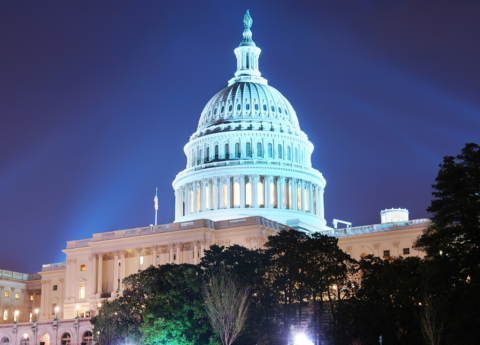Over the last few days, attention has turned to whether Governor Beshear’s budget underfunds the main state worker pension system, the Kentucky Employees Retirement System (KERS) non-hazardous plan, in the amount contributed for quasi-governmental agencies. The level of contributions for the last two years, as well as the level under the governor’s proposal, technically provide less than the KRS board has requested. That will also be the case in the new budget that eventually passes unless additional revenue is generated or resources are freed up through more painful budget cuts.
But without more revenue and lacking room to make more cuts, the governor’s original proposal provides a solid path to continued improvement in the health of the retirement system — and support for the organizations and workers that provide vital services at those agencies — and a much better approach than the options created by House Bill 1 enacted in the special session last summer.
Proposal builds on recent KERS progress by further increasing funding and keeping quasis in system
The governor’s proposed budget as introduced would cap contributions from quasi-governmental organizations (community mental health centers, health departments, regional universities and others including domestic violence agencies) at 67%[i] of employees’ pay, rather than the 93% of pay now requested for state employees.[ii] The budget as outlined provides funding to those organizations to fill the gap between what was contributed the last two years (49% of pay) and the new contribution level.
It also prevents those agencies from leaving the retirement system under options created in HB 1 passed in the 2019 special session last summer. As we noted at the time, HB 1 presented quasis with a set of undesirable options, including some that required freezing the pension benefits of over 6,000 mid-career employees protected by the inviolable contract. As a recent Herald-Leader article revealed, basically no agencies seem interested in leaving the system because the terms for their exit created by HB 1 are unfavorable.
By keeping quasis in the pension system instead, the governor’s plan protects those employees, keeps the agencies from facing pension costs that would otherwise spike to 93% of pay, and prevents HB 1’s shift of up to $827 million in costs back to KERS with no way identified to pay for it. Also, its proposed 1% raise each year of the budget for state employees will provide additional dollars to the pension system (because pay is the basis of both employee and employer contributions). And the addition of 350 more social workers and more revenue department employees will add new contributions to the pension system.
Though these quasi contributions are not the full 93% of pay requested by the board, they are a big increase from the payments being made in the current budget. And that amount was already resulting in real progress in the system because of the huge amount being contributed. Last year — despite investment returns of only 5.7%, a state contribution of a lower 83% of pay and a quasi contribution at just 49% of pay — the KERS non-hazardous plan had $149 million in positive cash flow. Its assets grew by $232 million or 11% compared to 2018, up to $2.4 billion. That is a big boost in just one year.
Increasing the state rate from 83% to 93% and the quasi rate from 49% to 67% would add over $100 million more a year, making the contribution approximately 10% above those large 2019 contributions.
Need a holistic view, not one based on narrow definition of issue
Without new revenue to pay for it, simply demanding that employers contribute huge increases to the pension system does more harm than good. It could result in quasis laying off employees, contracting out more of their services or even facing insolvency. Any of those options harm the vital services these organizations provide — and at the same time, hurt the pension system by reducing contributions.
In 2017, the board of the Kentucky Retirement System made sudden changes to the payroll growth and investment return assumptions, dropping them dramatically to the most cautious in the country. They did so without considering the consequences of the immediate spike in contribution rate — making it the equivalent of doing surgery with a machete.
The General Assembly already recognizes that while full funding may be ideal, it is not necessarily desirable if the resources to meet the KRS board’s huge request aren’t available. As a result, the legislature capped the funding level for quasis at 49% the last two years recognizing these organizations could not pay the higher cost. Additionally, the General Assembly set local governments’ contribution amount to the County Employees’ Retirement System at below the board’s new requested contribution, capping increases at no more than 12% a year. That was also in recognition that many local governments didn’t have the resources to pay for it (and new solutions will need to be found for local governments as stress grows from the rising contribution rate).
Decisions about pension contributions should not be made in isolation. They must take into account the effect on the entire system, including the choices about employment and service provision that agencies may have to make. Absent additional revenue, the original proposal contained in the governor’s budget would improve the situation in a way that the status quo under House Bill 1 would not.
[i]The Herald-Leader quoted the administration as now saying they intend the full contribution to be 84% of pay, which is not what was included in their budget documents. The intention is that the quasis will find the money for the additional contribution rate (paying for half of the increase from 49% to 84% of pay.)
[ii] The budget proposal has an exact quasi contribution rate of 67.41% of pay for pensions and 0% of pay for retiree health, while the state worker contribution rate is 80.98% of pay for pension and 12.03% of pay for retiree health. As we have noted, many states have made the practical decision of funding retiree healthcare on a pay-as-you-go basis rather than pre-funding it as Kentucky is trying to do — meaning our retiree health plans are already far better funded than most across the country. The proposal paused the health contribution. Looking at pensions alone, the proposed contribution for quasis is 83% of the actuarially required amount (67.41%/80.98%).



